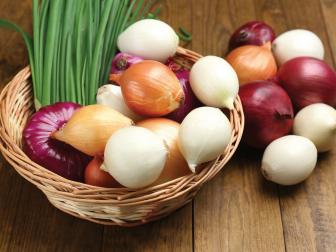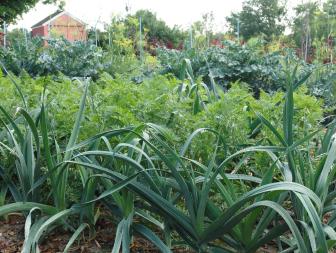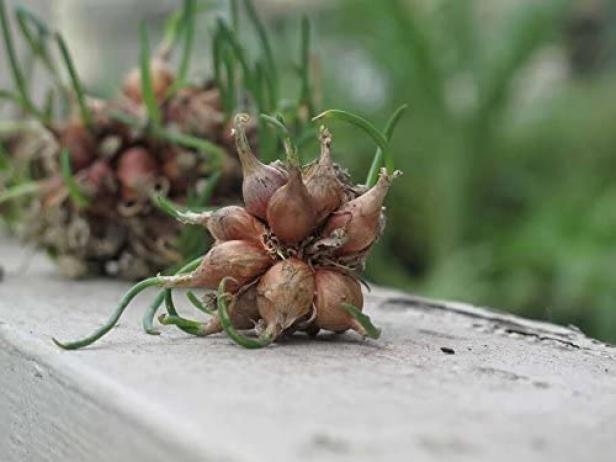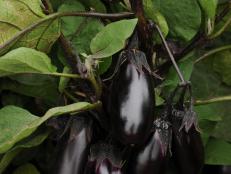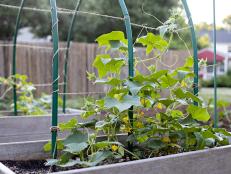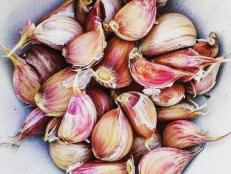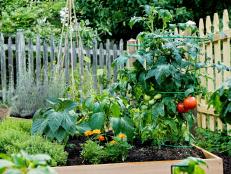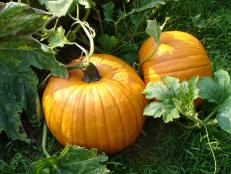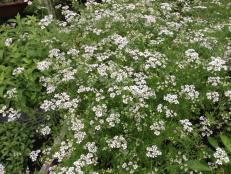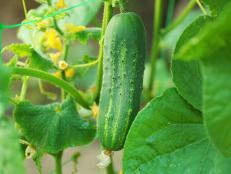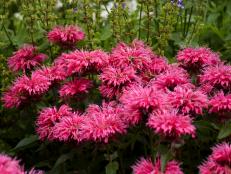Egyptian Walking Onions
These perennial onions travel across the garden over the years as their ingenious top-set bulblets take root to create new plants. Learn more about this perennial vegetable, including how to grow it in your garden and use it in the kitchen.
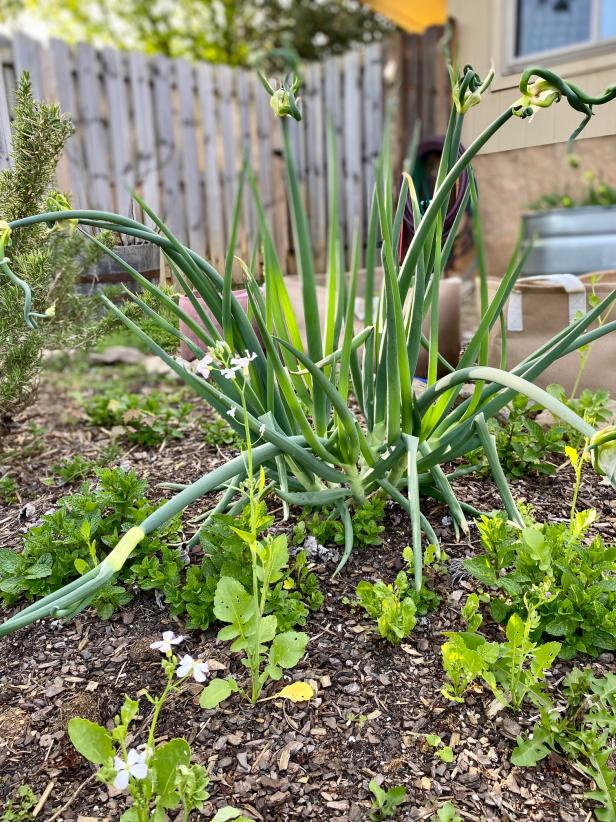
In spring, this Egyptian walking onion plant has formed new plants atop its stems. These heavy new plants are starting to flop over, where they can root in soil and "walk" the plant across the garden.
A unique type of perennial onion, Egyptian walking onions grow a cluster of bulblets where other onions would just grow flowers. The bulblets will sprout and grow on top of the original stalk, and the weight of this new growth may cause the top to flop over. If the top flops, the bulblets can root in the soil and grow a whole new set of plants, sometimes up to 2 feet away from the original onion — hence the name “walking onion.”
Botanical Name: Allium x proliferum
Common Names: Egyptian walking onion, tree onion, walking onion, Egyptian onion, top-set onion
Plant Type: Perennial vegetable
Light Needs: Full sun to part shade
Soil Needs: Well-draining
The name “Egyptian” likely comes from when these onions were introduced to Europe from Asia or Africa and is not necessarily a true representation of the plant’s origin. Botanically, the walking onion is a hybrid of a shallot and a Welsh onion (Allium fistulosum), another perennial onion commonly called a bunching onion.
Planting and Growing Walking Onions
Walking onions thrive in full sun but can grow in partial shade as well. They grow best in moist but well-draining soil, similar to most vegetables with a pH close to 6.5. The best time to plant is in summer or fall, before the first frost, for harvest the following spring; you can also plant in spring but won’t see flowers or bulblets until the next spring.
Plant Egyptian walking onions from bulbs. If you know someone who grows them, they will surely share as these plants are prolific. Plant bulbs 2 inches below soil, 6 to 12 inches apart, or closer together if you’d like to grow primarily for harvesting as scallions.
Perennial onions like walking onions are very easy to grow. Keep weeds to a minimum, avoiding competition, and, as with growing other onions, don’t overwater or let soil get soggy. Thin the plants every few years by dividing the bulbs as your “walking” patch of onions expands.
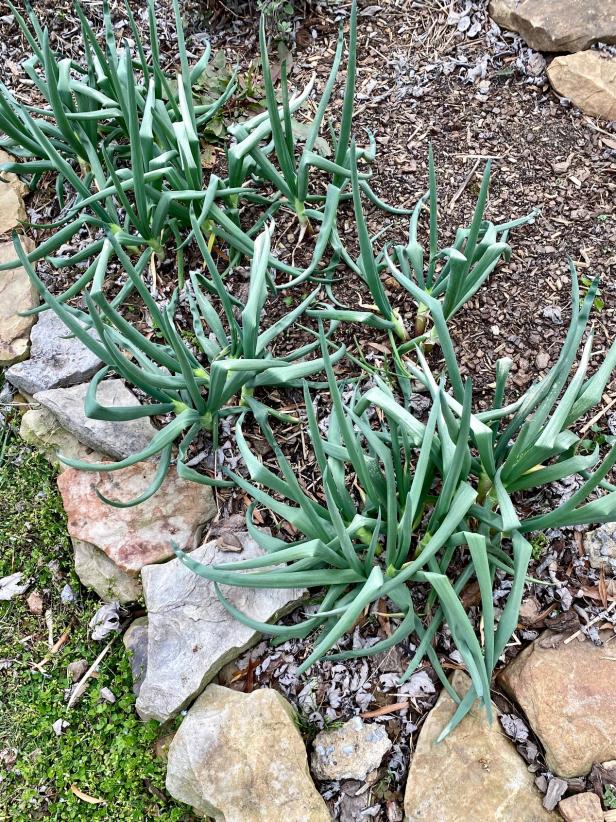
As perennial onions, Egyptian walking onions grow through winter and come back year after year.
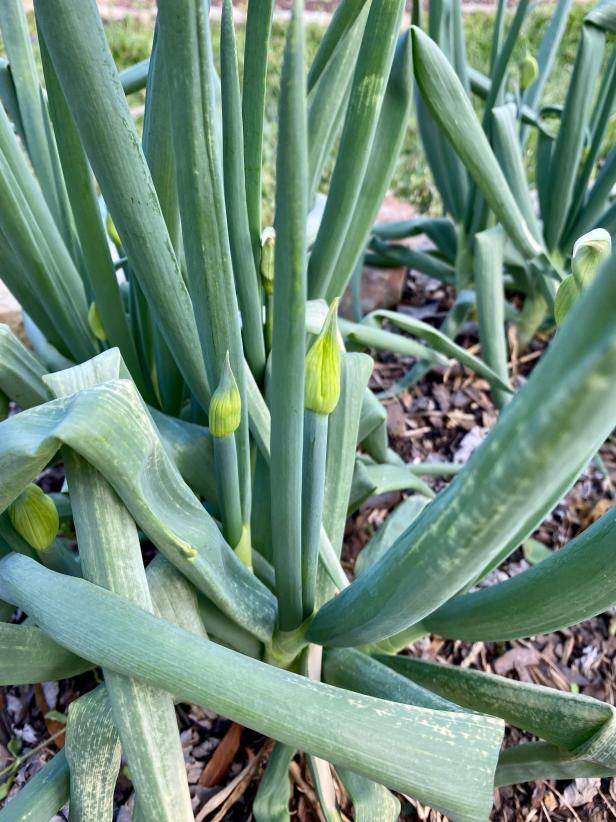
In late winter, bulblets are starting to form on a patch of Egyptian walking onions.
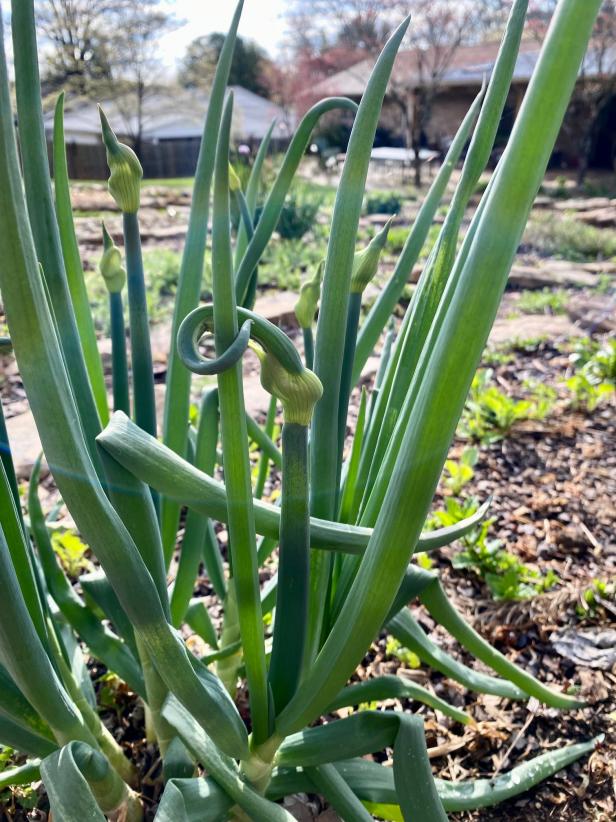
Rather than forming a full flower, Egyptian walking onions form a bulblet atop plant stems that becomes another plant.
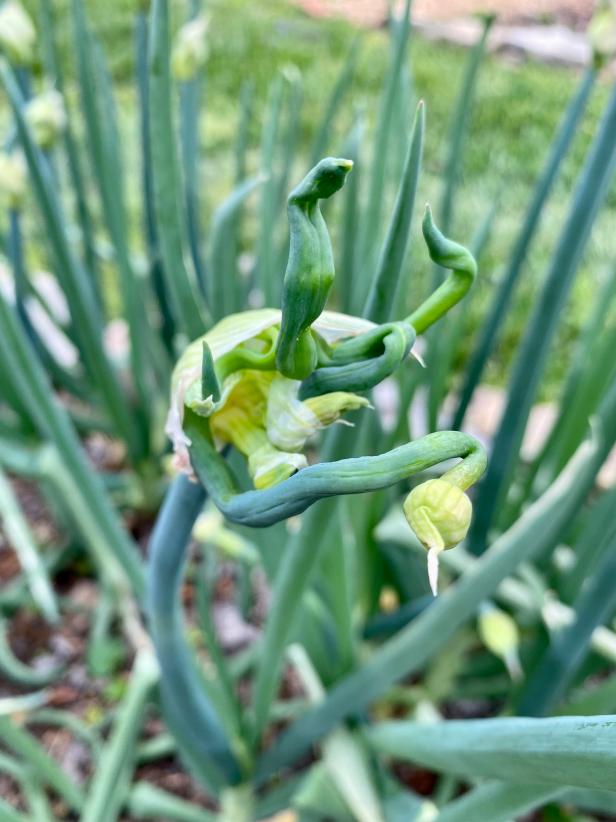
Egyptian walking onions are also called top set onions because they form bulblets atop stalks rather than flowers.
Harvesting, Culinary Use, and Propagating
For culinary use, this perennial onion is like several alliums in one! Egyptian walking onions can be harvested in various stages of growth: bulbs (fall), shoots (year-round), flowers (spring) and bulblets (summer). Use the bulbs like leeks, shoots like scallions, flowers like chive blossoms and bulblets like shallots.
To propagate, remove bulblets after they’ve matured and hardened in summer, then plant in fall. You may have a lot to share with friends and neighbors. You can also divide the bulbs in fall to thin the plants and use those bulbs to replant or share.
More About Perennial Onions
Most edible alliums grown in the vegetable garden are botanically biennials — meaning they flower and set seed after two years of growth — but treated as annuals because the bulbs or shoots are harvested in the first year. Perennial onions, however, self-multiply and can remain in the garden for many years. Beyond Egyptian walking onions, other perennial onion types include Welsh onions (also known as bunching onions), potato onions (Allium cepa var. aggregatum), ramps (Allium tricoccum) and chives (Allium schoenoprasum).
Beneficial Hover Fly on Walking Onion
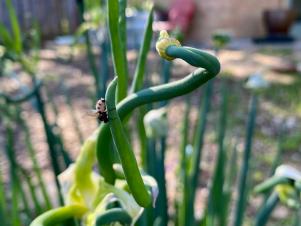
Beneficial Spider on Walking Onion

Perennial onions make a nice addition to a perennial herb garden and as an evergreen border in a vegetable garden or flower garden. Onions are known to deter rodent pests while attracting beneficial insects, so they can also serve as a beneficial companion for various vegetables year-round.
More About Growing Onions
How to Plant and Grow Onions
Get our tips on planting, growing and harvesting onions in your garden.
Companion Planting for Onions
Onions are easy to grow and so ueful in the kitchen. Learn what other vegetables and herbs grow well with onions in the garden.

.-Battle-on-the-Beach-courtesy-of-HGTV.-.jpg.rend.hgtvcom.196.196.suffix/1714761529029.jpeg)





